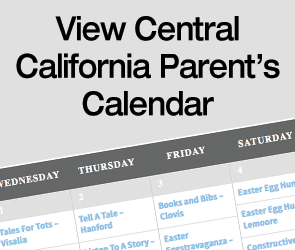Help Your Kids Use Social Media in a Healthy Way

by Christa Melnyk Hines
Gone are the days of seeing teens cruising around town together on a Friday night. Social media is now the hippest hang-out spot for kids, even as young as elementary school age. Parenting this generation of digital kids means we need to know how to help them navigate social media in a healthy, positive and safe way.
According to the American Academy of Child & Adolescent Psychiatry, by age 13, more than 60 percent of kids have at least one account on social media and on average, many spend around two hours a day there.
Social media offers kids a way to connect with friends and family all over the world, express themselves artistically and politically, and connect with peers who share their interests. But without moderation, the American Academy of Pediatrics says these platforms come with serious mental health risks like depression, anxiety and distorted body image.
Ready-or not? Most sites require that users are 13 or older. But according to Nominet, a safety advisory site, nearly 60 percent of kids have joined a social media platform by age 10.
Research the different social media sites that your child wants to join and join them yourself to familiarize yourself with the app’s privacy measures and messaging. Be aware that many of these platforms depict subject matter that your child may not be developmentally ready to handle.
Consider your child’s personality.
• Do they tend to be impulsive?
• Do they understand that nothing they post is private?
• Are they prepared to see friends enjoying a gathering or activity that they weren’t invited to?
• Are you willing to check in regularly and have discussions about smart online decisions?
• Will your child talk to you if they see or experience something that bothers or worries them?
Define your boundaries. Remember when your parents said nothing good happens after midnight? Even if your child is safely ensconced in their room, the same wisdom applies. Besides depression and anxiety, the more time kids spend on social media, the more problems can arise from invasions of privacy and cyberbullying to sleep deprivation.
Establish family rules around when and where electronics are allowed in your home and for how long. Involve your kids in the discussion. Role model healthy electronics use by following the rules you implement. Create a charging station where everyone’s devices are turned in by a particular time each evening to ensure quality sleep.
Talk about the reality behind picture perfect. “The emphasis on perfect selfies has amplified body image issues for girls,” writes Jean M. Twenge, Ph.D., in her book iGen: Why Today’s Super-Connected Kids Are Growing Up Less Rebellious, More Tolerant, Less Happy-and Complete Unprepared for Adulthood.
Girls are more likely to spend a painstaking amount of time taking hundreds of selfies in an attempt to get just the right one, in pursuit of likes, “but still end up feeling as though they’ve fallen short,” Twenge says.
Social media posts are simply snapshots of people’s more complex lives-usually the carefully curated, positive sides of themselves that they choose to share.
Discuss privacy. Make sure privacy settings are in use and that your kids only friend people they know in real life. Watch for apps that don’t have strong privacy protections, zero in on your geographic location, and open the door for strangers to message them.
Remind your kids not to post personal information like your home address. Inappropriate photos and posts disparaging a particular person can also come back to haunt them. Anything sent through messaging apps or posted online can be shared outside their network. Before they post, encourage your kids to ask themselves: “Would I want Grandma to see this?”
Set up restrictions on their phones that require a parent to enter a password before they can download an app. This gives you a chance to discuss the app they want and decide together if it’s a good idea.
Take a digital breaks. In addition to creating digital free spaces like the dinner table or the car, choose a day of the week when your family unplugs from social media and the online world. This is an opportunity to simply be in the present and pursue personal interests without worrying about the rest of the world, other than the people who matter most to you in the here and now.
Since this exercise can be a difficult adjustment for a plugged-in family or anyone who fears missing out, plan ahead to make it fun. For example, invite your kids’ friends over. Gather with another family for dinner. Go on a family hike or bike ride. Visit an attraction, exhibit or nearby town. Or make it a family game day with indoor or outdoor games and favorite snacks.
Strike a balance. Twenge writes that today’s teens spend about an hour less each day with friends in person than teens did five years ago.
Because the brain doesn’t respond to computer-mediated connection in the same way it responds to in-person interaction, individuals who spend more time engaged in on-screen activities, compared to off-screen activities, are less likely to be happy and feel lonelier.
“There’s this important concept called limbic resonance,” says psychotherapist Dr. Hilarie Cash, the chief clinical officer for reSTART Life, a treatment program specializing in internet and video game addiction. “When you’re in the presence of someone you feel safe with and cared about, the brain releases a whole bouquet of neurochemicals that keep each of us in the relationship feeling well emotionally and physiologically. We need it. It’s our birth right as social animals. Screen-mediated relationships don’t produce limbic resonance.”
Encourage school and extracurricular involvement. Help your child discover activities that give them a sense of purpose, personal satisfaction and self-confidence. They’ll begin to develop friendships around shared interests and gain essential social skills. And when they do go online, they’ll be more aware that social media is meant to complement their social life, not replace it.
WHAT TO WATCH FOR
Anonymous apps: These apps can be a breeding ground for cyberbullying
Real-time video streaming: Kids can inadvertently share personal information without knowing who is watching. Choose video apps that allow for editing or an internet-based channel.
Disappearing photo/video apps: Nothing is truly temporary and some kids have gotten into legal trouble for sharing material that they thought disappeared.
Location tracking defaults: Turn off location settings/geotagging on the phone and in the app.
To learn more visit CommonSenseMedia.org
Central California Parent is the #1 FREE parenting resource for Central Valley families.
Stay connected with Central California Parent throughout the month!
• Like Us on Facebook
• Follow Us on Instagram
• Follow Us on Pinterest
• Follow Us on Twitter
• Subscribe For our Family E-Newsletter
• Read Our Digital Edition
• Enter for our FREE Giveaways






